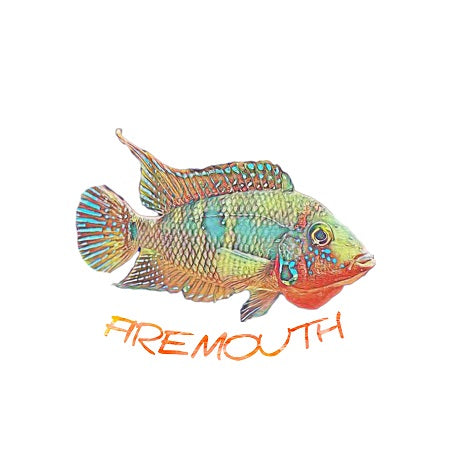Everything you need to know about aquarium crabs and how to care for them
Compartir
Introduction: What are aquarium crabs and how are they different from other crustaceans?
Aquarium crabs are a popular type of crustacean that can be kept as pets in an aquarium. They come in a variety of sizes, shapes and colors, making them an interesting and attractive addition to any home aquarium. Unlike other types of crustaceans such as lobsters or shrimp, aquarium crabs have specialized adaptations that make them suitable for living in captivity. These adaptations include their size, ability to climb walls and other surfaces, and their dietary preferences. In this article, we will explore the unique characteristics of the four types of crabs we have available at Firemouth Aquaristic.

The different types of aquarium crabs and where to find them
Aquarium crabs are an interesting and unique addition to any home aquarium. They come in a variety of shapes, sizes, and colors, and can provide hours of entertainment for aquarium owners. In this article, we will discuss the different types of aquarium crabs available at Firemouth Aquaristic.
1. PARATHELPHUSA PANTHERINA – Sulawesi Leopard Crab

Origin: The Panther Crab is a species native to Sulawesi (Celebes), endemic to Lake Matano and its surroundings.
2. GEOSESARMA DENNERLE - ruby vampire crab

Origin: The purple Vampire Crab is a tropical species of crab native to Malaysia and Indonesia.
3. GEOSESARMA DENNERLE - purple vampire crab

Origin: The purple Vampire Crab is a tropical species of crab native to Malaysia and Indonesia.
4. GEOSESARMA TIOMANICUM - purple orange crab

Origin: The Purple Orange Crab is a species native to Malaysia and Indonesia
What do aquarium crabs eat? Essential Guide to Diet and Eating Habits
Aquarium crabs are fascinating creatures to keep in home aquariums, but they require a specific diet and eating habits to stay healthy and happy. In this essential guide, we'll explore what aquarium crabs eat, how often they should be fed, and the types of foods that can be part of their diet.
We will talk specifically about the species that we have for sale at Firemouth Aquaristic, which are omnivorous species.
What do we feed them?
Fish food, bottom pills, granule...
Feeding frequency: Once a week since they also eat the little bugs that are created around the moss and plants.
How to Create the Perfect Habitat for Aquarium Crabs
Creating the perfect habitat for aquarium crabs is an important part of keeping them healthy and happy. With the right setup, you can ensure that the crabs in your aquarium can thrive in their environment. In this article, we will discuss the key elements to creating a successful habitat for your aquarium crabs. We'll look at what type of substrate to use, how much space they need, what type of water parameters need to be maintained, as well as any additional accessories or decorations that can help create a comfortable and stimulating environment for your crustaceans.
Go for it!
This past week, we created a perfect habitat for aquarium crabs and we wanted to document it all so you can do it yourself too.
What materials have we used? We detail it here below:
- Vivario : we have used the nature 36 model which is the one you can see in the YouTube video.
- Lighting : we have used the new Z LED screen that we have available as a novelty in our online store. Z30 model
- Amelia Rock : for this assembly and taking into account the measurements of the Nature 36 Vivarium (36x22x27cm) we have used around 5 kg of 10 to 20cm Amelia rock . It is always convenient to have a few extra kilos to be able to use the ones that best adapt to the design.
- Sakana Silica Sand : we needed a single 3kg package of this Sakana silica sand that has a very good price and you can reuse in different projects.
- Riverest aquascaping kit : the new Aquascaping Kit that includes everything you need to make your Scape.
- Sera branch , although you can find a mix of branches that is a basic wardrobe item for any aquarist to have.
- Java moss : we have a very good moss promotion with which you have plenty of material for assembly: java moss
- Bucephalandras and some loose plants: https://firemouthaquaristic.com/collections/bucephalandras
And in this montage we have incorporated: Gesosesarma Dennerle
You can see the complete assembly here:
